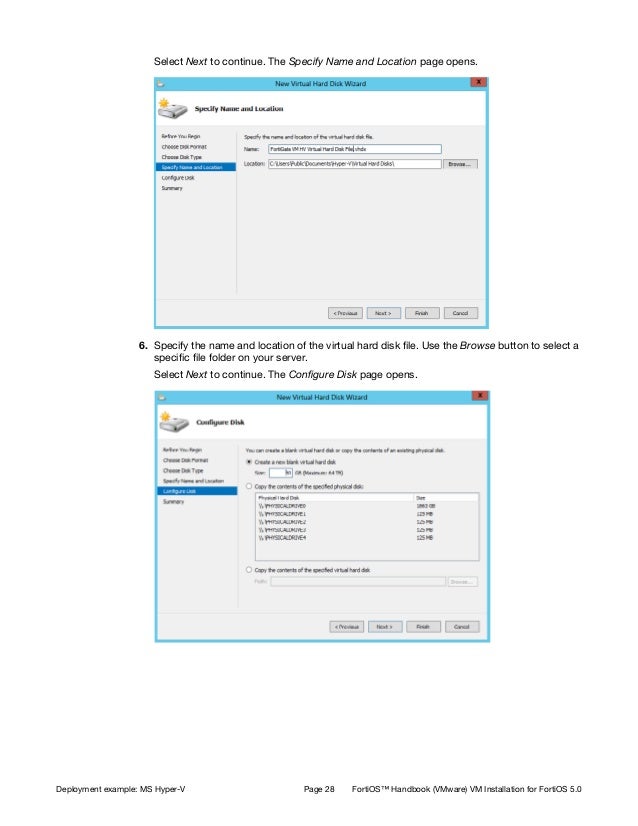Download Fortigate Vm
Hello, in this detailed guide i will show you how to add Fortigate to GNS3, how to do basic network configuration for the machines, and how to access FortiGate through CLI (Command-Line) and web.
Requirements
In the Download drop-down menu, select VM Images to access the available VM deployment packages. In the Select Product drop-down menu, select FortiGate. In the Select Platform drop-down menu, select KVM. Select the FortiOS version you want to download. Fortinet FTNT recently announced that it is expanding support to VMware VMW to jointly enable end-to-end security and security management across dynamic cloud infrastructures. FortiGate-VM, which.
------------------------------------------------------
• GNS3 (V 2.0.3) & GNS3 VM (Or above)

• Download FortiGate appliance from Here

• Download FortiGate 5.6 Image from Here
• Download Tiny Linux Firefox Appliance from Here
• Download Tiny Linux Firefox Image from Here
------------------------------------------------------
Import Appliances & Images
Start a new blank project, click File > Import Appliance, then choose the FortiGate appliance file (.gns3a)
Click Next, then choose 'Run the appliance on the GNS3 VM(recommended)' option, after GNS3 verify the VM requirements to run the appliance, click Next.
Click on Refresh, a list of all the required FortiGate files will appear like the following
In your case all the files will be missing. For this guide i will be using FortiGate 5.6.1.
Under FortiGate 5.6.1 on the list, click on FGT_VM64_KVM-v5-build1484....., then import, then choose the file extracted from the FortiGate Image.
Note: In order for FortiGate to operate, it needs an empty harddisk
The harddisk can be created using linux tool called 'qemu-img' using the following command:
or you can download the file from Here .
To import the harddisk into GNS click on empty30G.qcow2 under FortiGate 5.6.1 on the list, then import and choose the harddisk file.

After adding the two files they will be ready to install, click on Next, then choose /usr/bin/qemu-system-x86_64 (v2.5.0) for Qemu binary, then click Next, Next, Finish.
FortiGate will appear on Security Devices Tab
To import Tiny Linux Firefox, Click File >>> Import Appliance >>> Choose the Tiny Linux Firefox Appliance file >>> Click Next >>> Under Firefox 31.1.1~2 click on linux-tinycore-linux-6.4...... then import >>> choose the Tiny Linux Firefox image file >>> Click Next >>> choose /usr/bin/qemu-system-i386 (v2.5.0) for Qemu binary >>> Click Next, Next, Finish.
Firefox will appear in the End Devices tab.
Network Topology & Configuration
For this guide i will configure a very basic network topology.
Download Fortigate-vm64.ovf
FortiGate Configuration
Right-Click on FortiGate, then click on Console to access the CLI. The username is 'admin' and blank password.
To set IP on port 1 run the following commands.
Tiny Linux Firefox Configuration
Right-Click then choose console, a GUI will appear.
open a terminal and run 'ifconfig' to check for network interfaces. in my case i will configure interface 'eth0'. Run the following commands to set an IP.
To open Fortigate through web, click on Firefox and type your default gateway IP in the URL bar. Enter username 'admin' and empty password
Finally, the portal will open and you should see the following
I hope that this will help you in configuring FortiGate inside GNS3.
I'm looking to see if anyone has had any success getting an evaluation VM running in VirtualBox. I've gotten very close myself, but I'm running into some strange obstacles. pfSense and Cumulus were buttery smooth in importing their OVA file, booting up, attaching network interfaces, etc. It'd be great to get one of those Fortinet Cookbook articles made up for this. (hint, hint :P)
I did have to take a little bit of a round about way to get a FortiGate VM to even boot in VirtualBox. I had to download the OpenXen VM version to get the qcow2 file format then use the qemu-img Linux utility to convert it to a vmdk file (or VDI), which I could then boot from successfully. Interestingly too, I'm getting a license error with this VM as well even though I only gave the VM one CPU and 1024Mb of RAM as stated here.
Download Fortigate Vm 5.4
Mainly, it has issues communicating with my other VMs. I see it's learning ARP and LLDP shows active and connecting to my expected ports, but no luck pinging where I should be able to ping. I'm using the 'Internal Network' type and 'Intel PRO/1000 MT Server' adapter type to simulate ethernet connections. Can't image it's a problem with VirtualBox since I have two pairs of MLAGed Cumulus switches, a pair of HA pfSense boxes hanging off my 'spine' switches, a CentOS box with a teamed interface hanging off the 'leaf' switches, and three other Cumulus VMs running as BGP peers acting as the Internet.